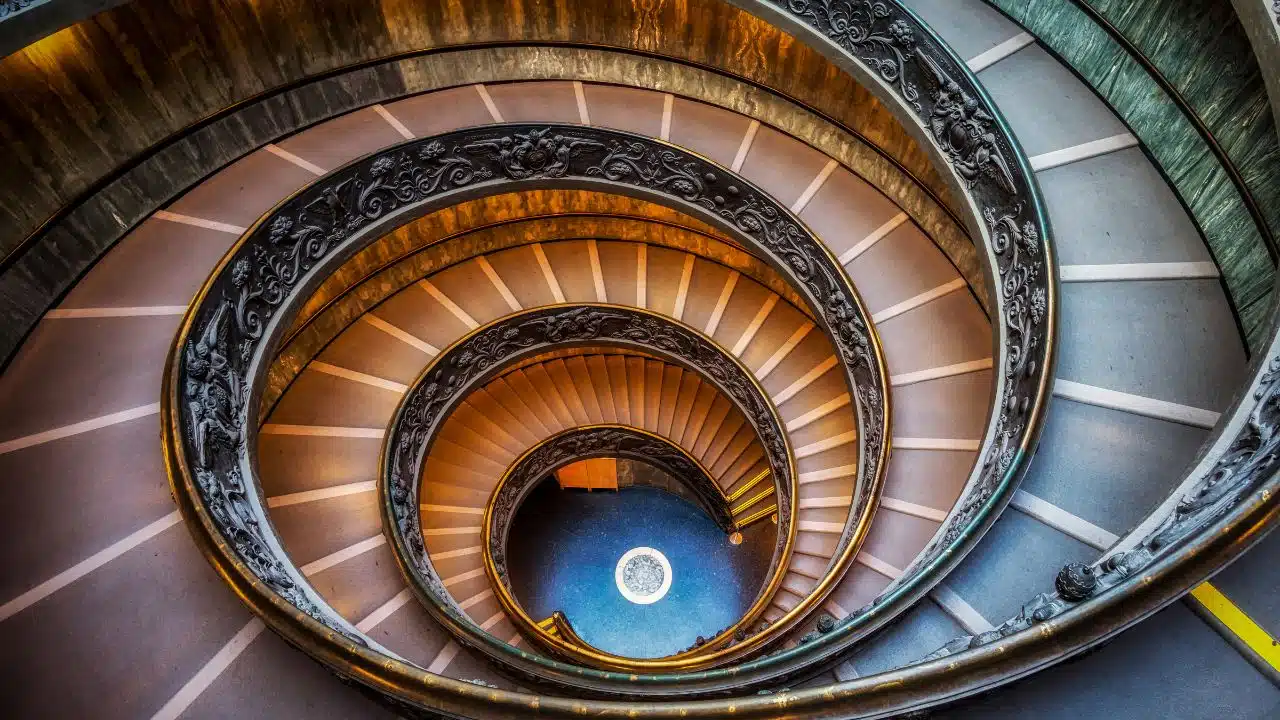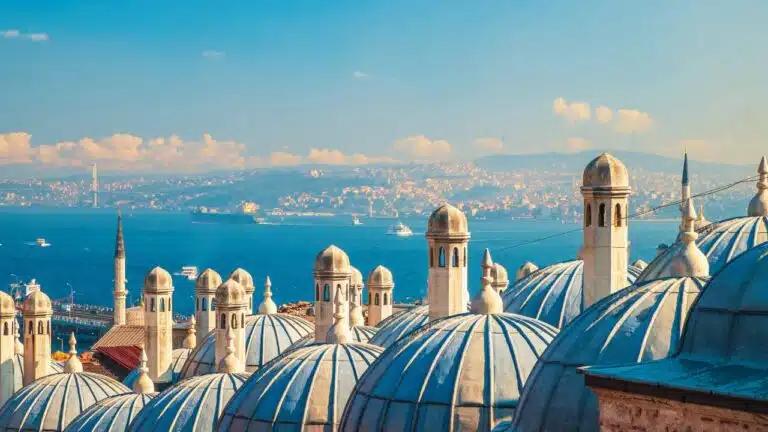If you want to delve into a country’s history and culture, there are one of two places to go: its streets or its museums. Go to almost any major city in the world and you’ll find a museum, or even several, dedicated to art and historical items gathered from all over the world and spanning the course of millennia. Housed within some of the biggest and most beautiful buildings, visitors lose themselves for hours, or even days, traversing art through the centuries. So, if you’re ready to get lost on your next vacation, here are 24 of the best museums in the world to do it.
Table of Contents
- What Are the Top 5 Biggest Museums in the World?
- The Top 24 Museums in the World
- Travel the World and Explore the Best Museums with Next Vacay
What Are the Top 5 Biggest Museums in the World?
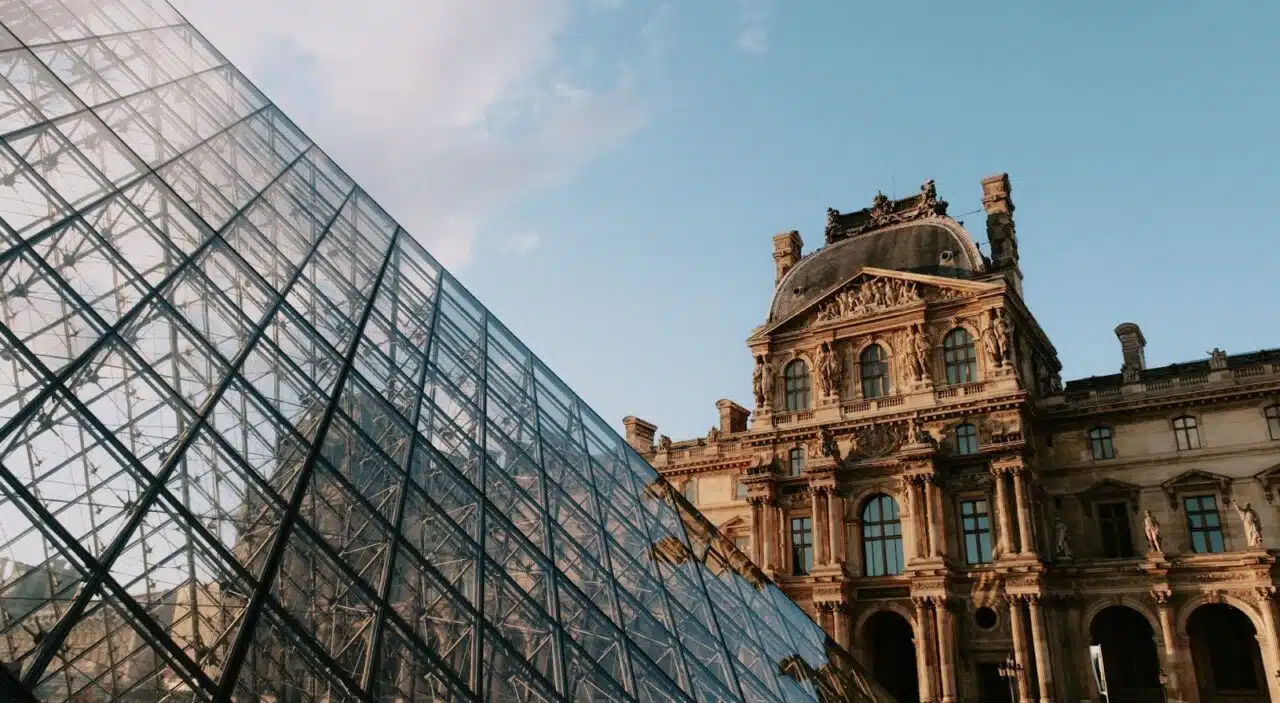
When it comes to the biggest museums in the world, size and impressive collections go hand in hand:
- The Louvre, Paris
- The State Hermitage Museum, Saint Petersburg
- National Museum of China, Beijing
- The Metropolitan Museum of Art, New York
- Museo del Prado, Madrid
Few museums offer as much square footage or depth and breadth in their collections as these treasure troves of art and history. The Louvre tops many a list of must-visit museums, but you can’t go wrong perusing the works and halls of any one of these incredible buildings.
The Top 24 Museums in the World
Ready to turn your next vacation into a cultural revelation? Here are 24 of the best museums in the world to discover art, history, and even some stunning bits of architecture, from royal residences to railway stations.
The Louvre Museum, Paris
Touted as the best museum in the world, a trip to the Louvre is almost a prerequisite for visiting Paris. The glass pyramid that marks its entrance is almost as famous as the art it houses, from the enigmatic Mona Lisa to the moving Venus de Milo. But the now iconic building has weathered its share of controversy, including some unfavorable opinions about its modern aesthetic. However, those naysayers have since come around, and with over 30,000 pieces tucked away in its walls, the magic of this space is that there’s always a new discovery awaiting inside.
Vatican Museums, Vatican City
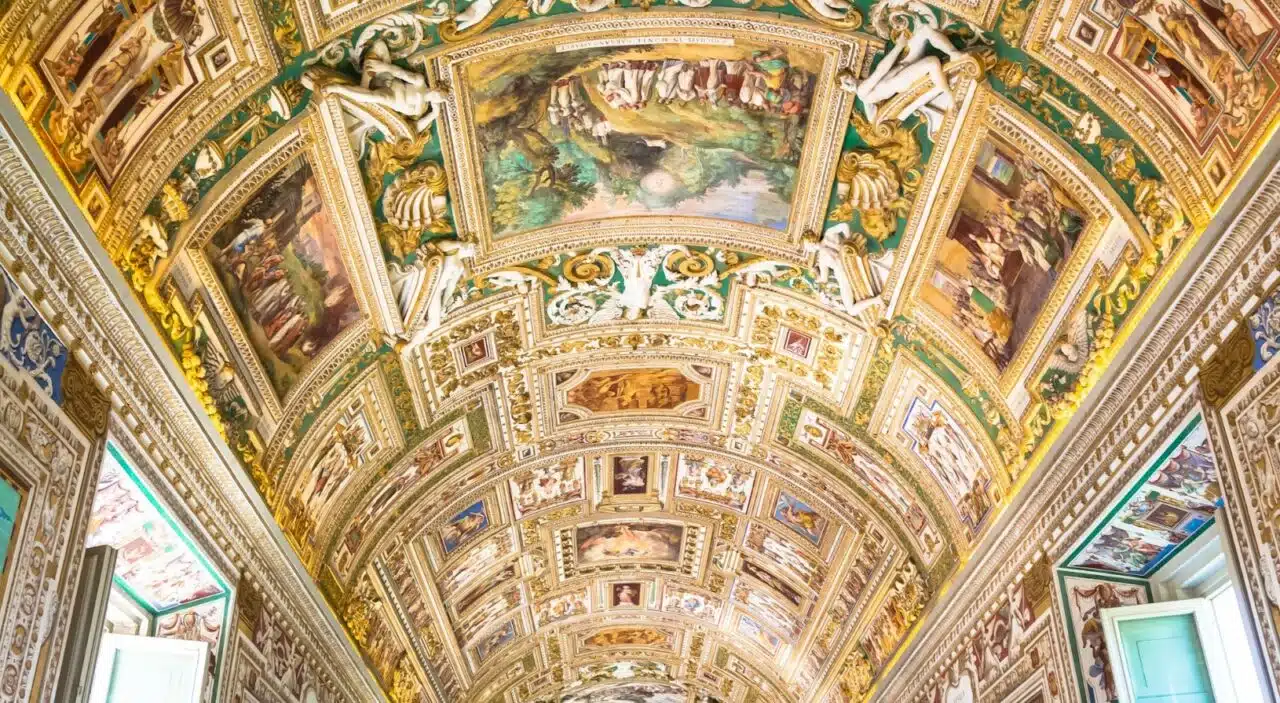
One of the world’s biggest museums is located in its smallest country. The Vatican Museums in Vatican City span 460,000 square feet, a sizable number that claims a tenth of the tiny city-state’s size and a spot among the top ten largest museums. But it’s not the size that attracts visitors year after year; it’s the art. Millions gather to view the masterpieces contained in the museum’s 54 galleries, from Rodin’s Thinker to Michelangelo’s Sistine Chapel. The corridors of the Vatican Museums are ever-winding, taking visitors on a journey that spans over five miles and 2,000 years of history.
British Museum, London
Founded in 1753, the British Museum is the world’s first national museum. So you’d be right in thinking there’s a lot of history bundled up in such a storied museum. From ancient Aztec and Roman pieces to the British Age of Enlightenment, the museum contains millions of years of history spanning nearly the entire globe. This vast collection makes England’s British Museum one that millions of people visit every year—of course, the free admission helps, too.
Metropolitan Museum of Art, New York City
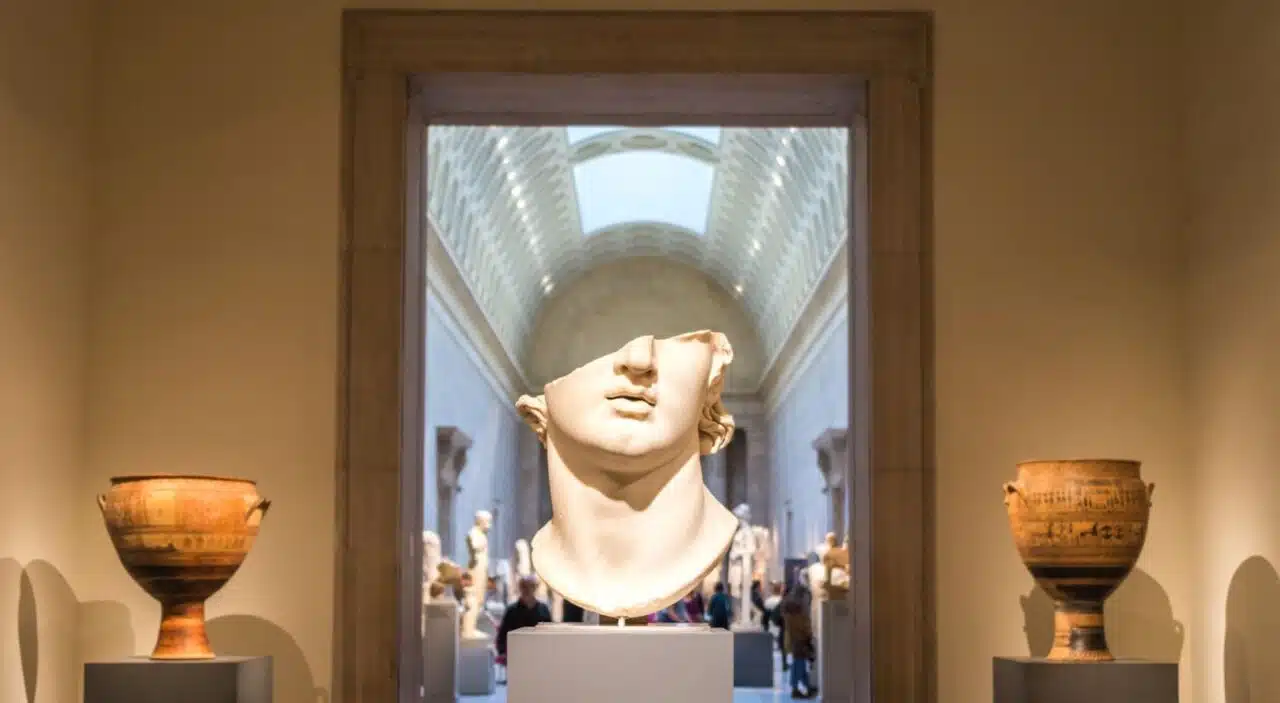
The Metropolitan Museum of Art first opened its doors on 681 Fifth Avenue with a single gifted Roman sarcophagus. A lot has changed since then. The museum has since moved to glamorous Fifth Avenue and contains a now sprawling collection of over 1.5 million pieces, which includes the Egyptian Temple of Dendur (10 B.C.) and Degas’ “The Dance Class” (1874). The Met’s original purpose was to bring art and education to the American people. As the largest museum in the United States, it has grown to delight, inspire, and teach people worldwide.
The Museum of Modern Art (MoMA) – New York City
Opened in 1929, the Museum of Modern Art is almost 100 years old. As any century-old building worth its salt, it has quite the stories to tell, from its founding just days after the Black Friday Wall Street Crash to a deadly fire that destroyed its 18-foot-long Monet Water Lilies painting. But the pinnacle of the museum has always been its art. As the first museum in the world to focus solely on modern art, the MoMA boasts over 200,000 works. Vincent van Gogh’s The Starry Night and Frida Kahlo’s Self-Portrait with Cropped Hair count themselves among the museum’s masterpieces. In addition to the art housed inside, MoMA also sports a beautiful sculpture garden where visitors can view and enjoy outdoor art installations.
State Hermitage Museum, St. Petersburg

Another royal residence turned museum, the State Hermitage once housed the Tsars and Tsarinas of Russia. Today, the 365 grand halls are home to a different kind of royalty, including the Rothschild Fabergé Clock Egg and the only painting by Leonardo da Vinci found in Russia. The museum goes on for miles, 14.9 to be precise, and houses roughly three million items in total, some dating as far back as the Stone Age. While you wander through time, keep an ear out. You may just catch a stray meow from the “guardians of the galleries,” the furry aristocats who help keep the halls of the Hermitage rodent-free.
Prado Museum, Madrid
Commissioned in 1785 by King Charles, the Prado Museum was originally meant to be a museum of natural history. The decision of his grandson, King Ferdinand VII, resulted in its transformation into a public gallery of art. Located in the heart of Madrid, it has become part of the city’s Golden Triangle of art, alongside Thyssen-Bornemisza Museum and Museo Reina Sofia. At first, the Prado Museum exclusively displayed Spanish art. By the 16th century, it began to integrate art from outside of Spain and now houses such gems as The Garden of Earthly Delights by Bosch.
Smithsonian National Museum of Natural History, Washington, D.C.

Smithsonian museums are Hollywood stars, but that has little to do with their features in feature films and more with their inherent star power. The Natural History Museum is one of 21 museums in the complex, but it represents the largest natural history collection in the world. Its objects range from the giant elephant on display in the lobby to jewels like Dorothy’s red slippers from The Wizard of Oz and even literal gems like the Hope Diamond. With a sprawling collection and dynamic exhibits covering the evolution and diversity of life, there’s something for everyone to discover. The best part? It’s free 364 days of the year.
The National Gallery, London
Spanning over six centuries of art, the National Museum is London’s love letter to European art. Though it houses a rather small collection of just 2,600 pieces, it includes some of the most inspiring paintings by some of the world’s most significant European artists: Van Gogh, Rembrandt, Vermeer, da Vinci, and more. The museum is set in the heart of London, Trafalgar Square, and intended to be a gallery for all. As it nears its two-hundredth birthday in April, millions continue to turn out in droves to admire the European masterpieces and enjoy one of the best museums in the world.
Rijksmuseum, Amsterdam
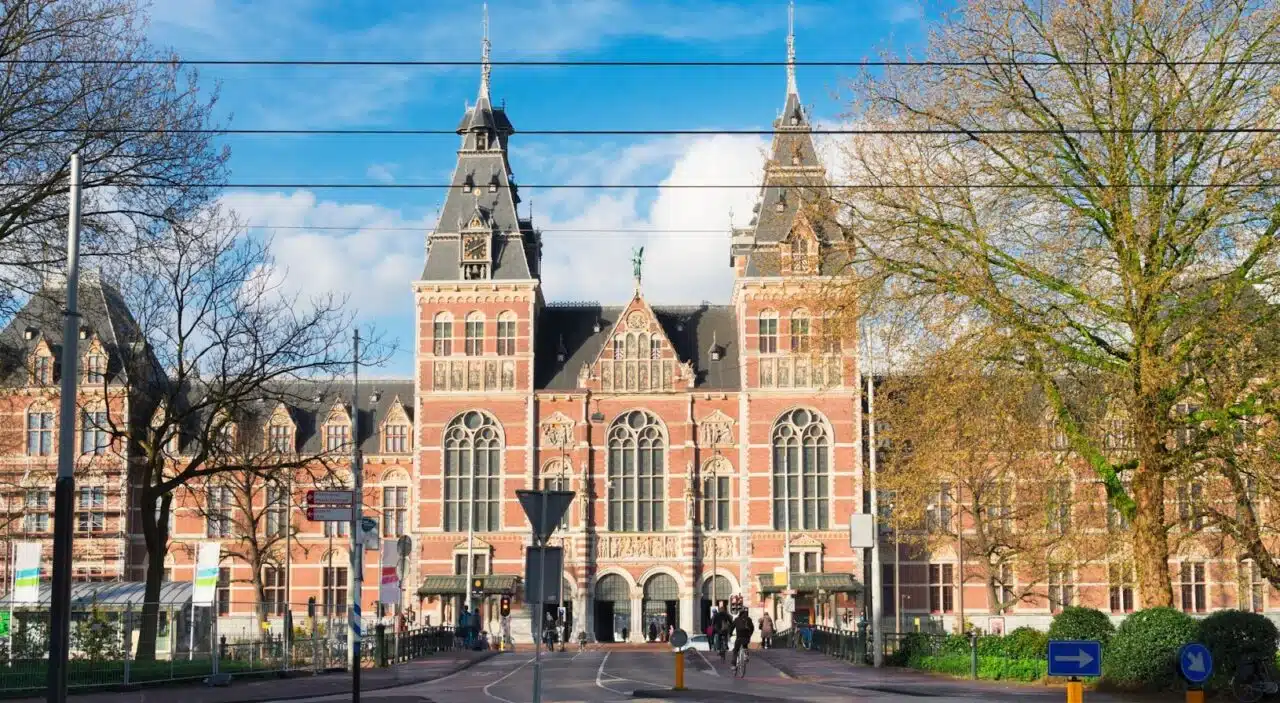
The Rijksmuseum in Amsterdam is one of the most unique museums you’ll find in Europe. The collection covers over a million pieces, with 8,000 on display at any time. The museum also boasts the largest art library in the Netherlands. And with over 800 years of Dutch history encompassed in its walls, you may find yourself needing it to learn more about the legless armor on display or the museum’s most famous artwork, Rembrandt’s The Night Watch.
The Guggenheim Museum, New York City
Innovation is the name of the game at the Guggenheim Museum. While this might seem counterintuitive in a space often dedicated to relics of the past, the Guggenheim’s design, with its sculptural exterior and organic interior, was built to complement the art it houses. From the ongoing Thaunhasser Collection featuring works by masters like Degas and Manet to the Guggenheim’s ever-rotating display of exhibits, the museum, including the building itself, is a fun look at art that represents the past, present, and future of human creativity and vision.
The Uffizi Gallery, Florence
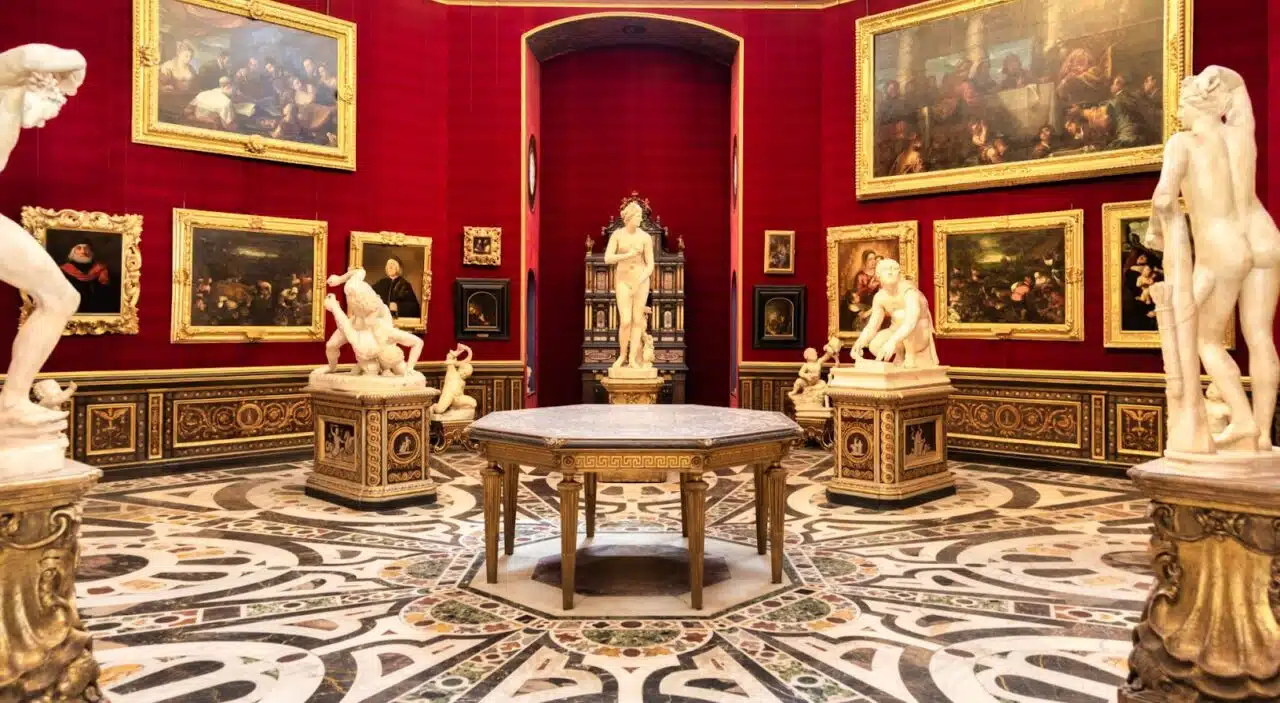
Italy is the birthplace of the phenomenon known as Stendhal Syndrome, the so-called “art attack” that can afflict those who gaze upon a truly beautiful work of art. What might seem overdramatic on paper becomes more real once you step inside the Uffizi Gallery. Known for its outstanding Renaissance art collection, the Uffizi holds gems such as The Birth of Venice and Medici Venus. With over 100 rooms displaying incredible works of art that span as far back as the Middle Ages, the Uffizi is a must-see on any visit to Florence.
The State Tretyakov Gallery, Moscow
The State Tretyakov Gallery began as the private collection of two brothers. It has since grown into the world’s largest collection of Russian fine art. Containing over 180,000 pieces of art, the museum highlights only those works of Russian painters, sculptors, and other artists. From impressionism to Art Nouveau styles and sweeping landscapes to moving portraits, the State Tretyakov Gallery presents a singular way to experience Russia through the eyes of its artists.
The Tate Modern, London
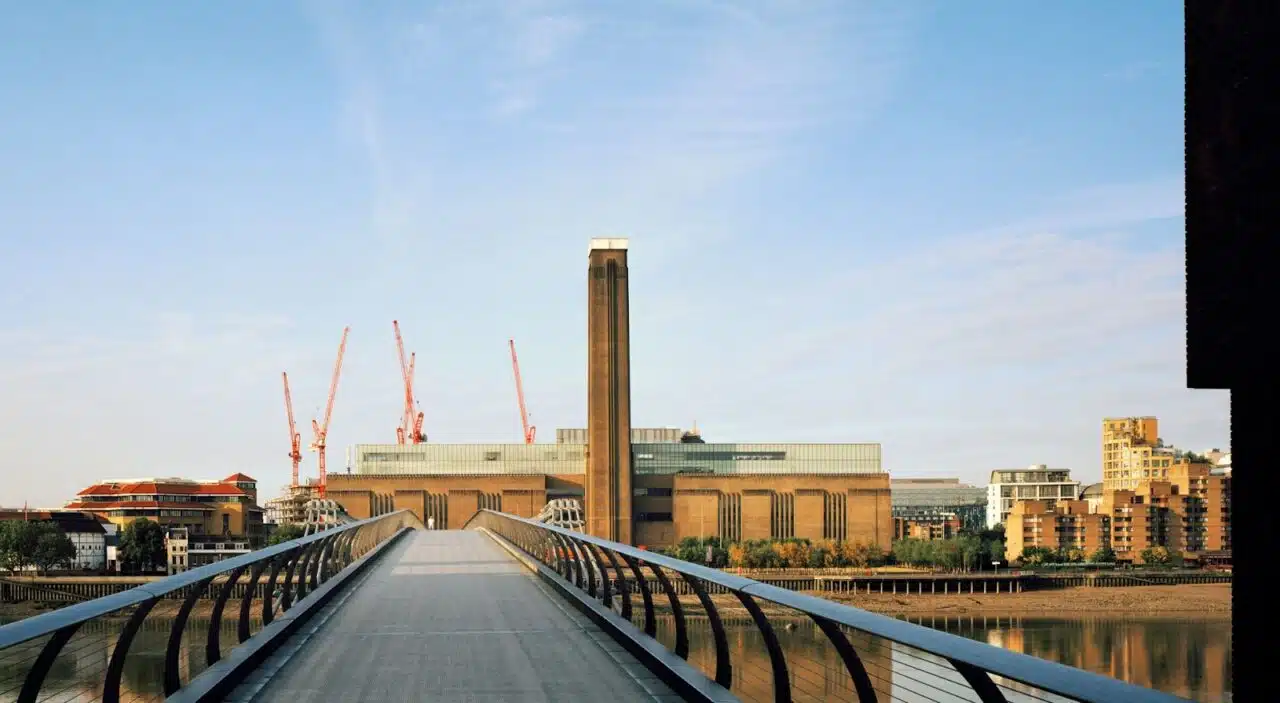
Opened in May of 2000, the Tate Modern is a fairly young museum. But inside this 24-year-old museum lies artworks spanning nearly three times that. Covering almost every source of artistic medium, the Tate Modern holds paintings, prints, sculptures, drawings, installations, videos, and more from the past 100 years. Its artists are just as varied, from the likes of Jackson Pollock to the Guerrilla Girls. It’s little wonder that all this culminates in one of the best museums and art collections in the world.
The National Palace Museum, Taipei
The National Palace Museum combines two irresistible draws: ancient Chinese culture and a beautiful museum. With a collection of over 700,000 pieces, few museums do it better than the National Palace Museum when showcasing the history of Chinese art. From Ming ceramic to bronze figurines and jades like the famous jadeite cabbage, the National Palace Museum is a treasure trove of wonders dating back nearly 5,000 years.
The Egyptian Museum, Cairo
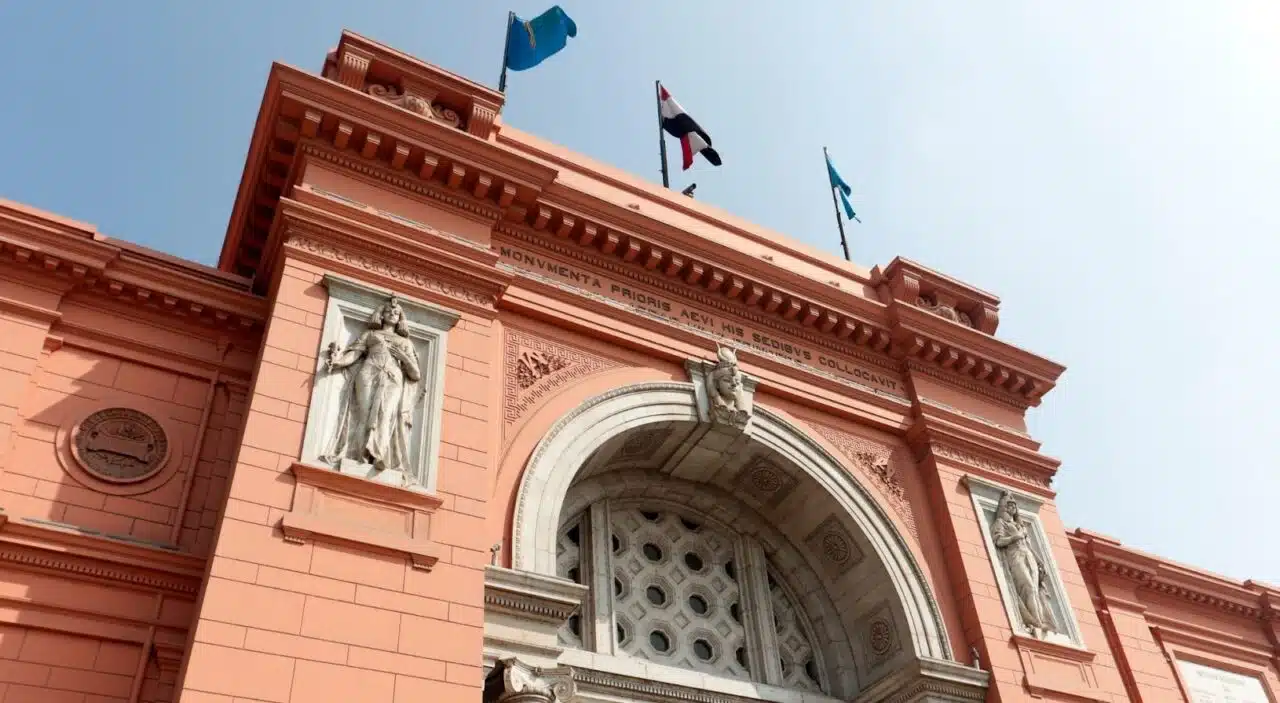
The first of its kind in the region, the Egyptian Museum was built to preserve the artifacts of ancient Egypt. Today, it’s home to Egypt’s great kings and queens, from the golden Mask of Tutankhamun to the dark Statue of Khafre and the bust of Queen Hatshepsut. But the collection extends far beyond statues of Egyptian royalty. Visitors can view Egypt’s Mona Lisa, a painting depicting an extinct species of goose, the Narmer Palette, considered the first historical document in the world, and so much more.
The National Museum of China, Beijing
The third largest museum in the world, the National Museum of China boasts both space and thousands of years of history. While the museum itself only dates back to 2003, when the Museum of the Chinese Revolution and the National Museum of Chinese History were merged, its artifacts—from ancient Chinese jades and porcelain art to stone sculptures and old Chinese money—promise visitors a journey through time and China’s greatest dynasties.
The Acropolis Museum, Athens
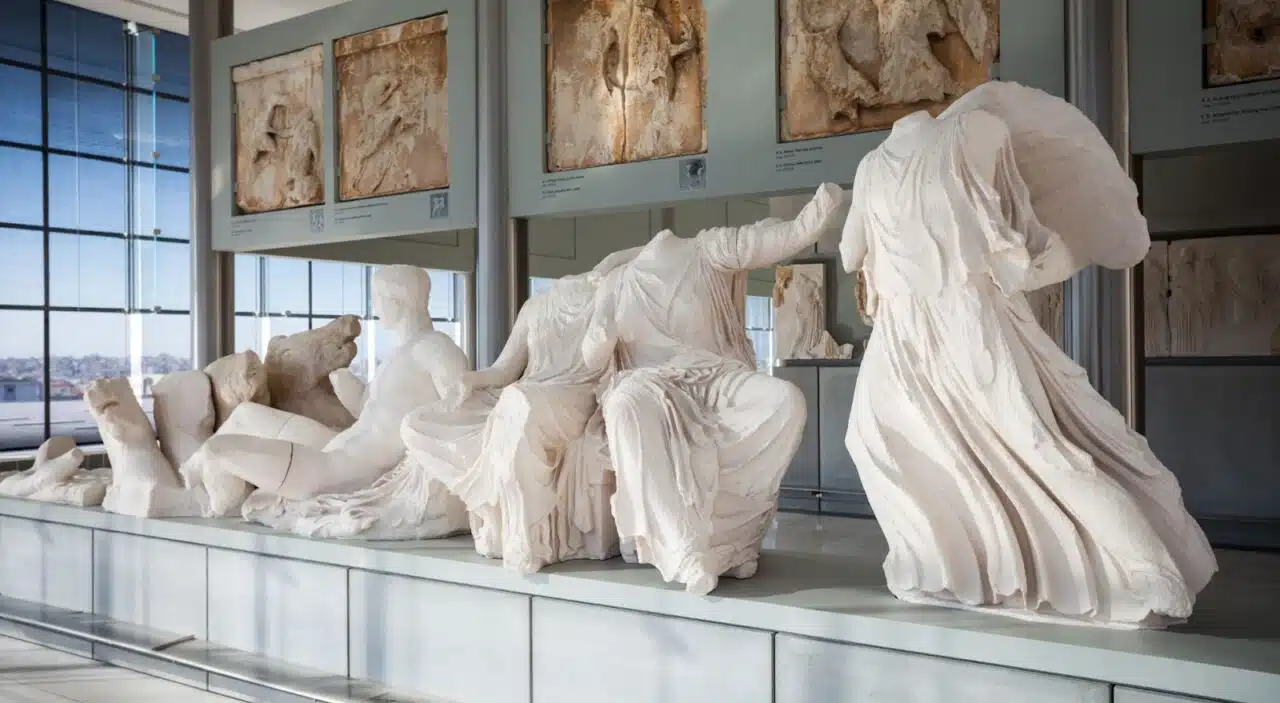
Opened in 2009, the Acropolis Museum is less than two decades old. But don’t let its youth fool you—this museum has infinite stories and secrets to tell. Over 4,000 items tell the history of ancient Greece, including prized pieces like the famed Caryatids and the renowned Parthenon Frieze. However, the pieces aren’t the only thing on display. Built over an archaeological site, the museum’s glass floor allows visitors to peer into the ancient city below while the view from the terrace includes panoramic shots of the museum’s namesake, the Acropolis, across the way.
The Art Institute of Chicago, Chicago
Founded as both a school and a museum, the Art Institute of Chicago has grown into one of the largest and most recognized art museums in the world, certainly one of the best, too. Outside the Louvre in Paris, the Art Institute holds the biggest Impressionist and Post-Impressionist art collections. But with over 300,000 works, all art lovers are bound to find something that tickles their fancy, from 12th-century European paintings and sculptures to Asian bronzes, ceramics, and more spanning millennia. Of course, visitors can’t miss the most famous work in its collection, Wood’s American Gothic.
Musée d’Orsay, Paris
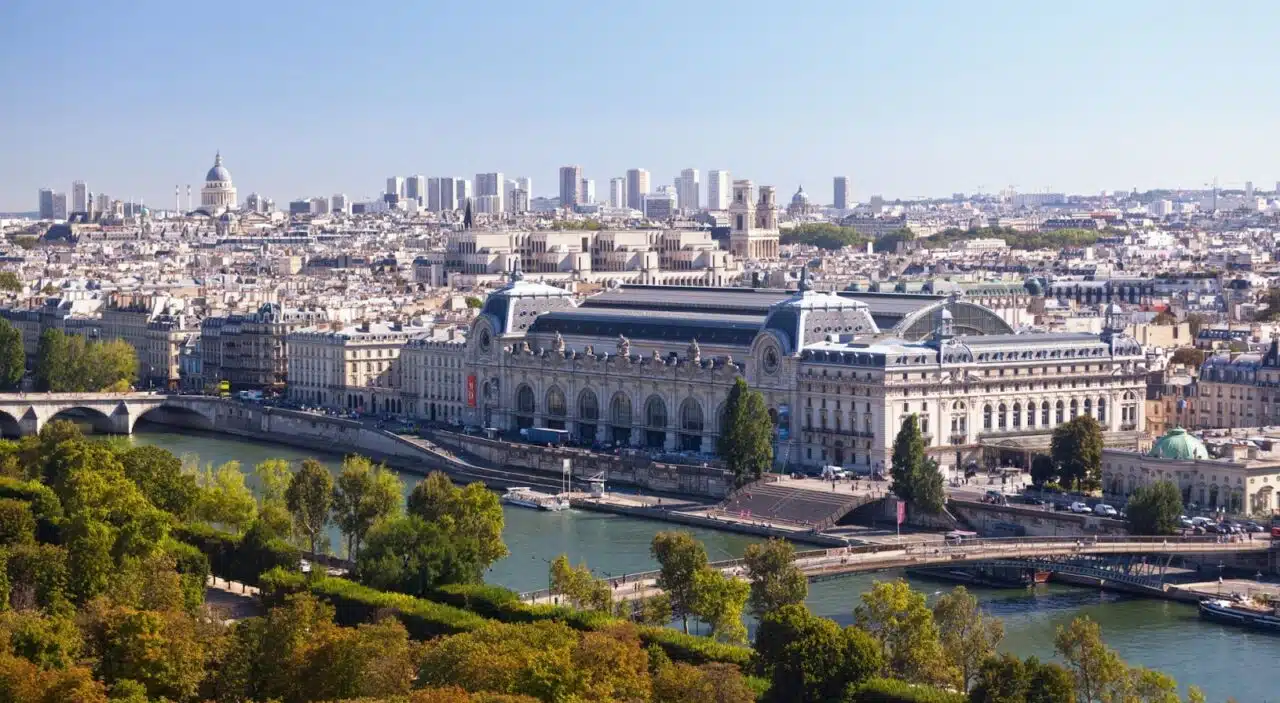
The towering ceilings and grand facade of the Musée d’Orsay hint at the fact that this is no ordinary museum. Once the site of a railway station, the building’s unique architecture serves as an unparalleled backdrop to the breathtaking works on display. Visitors can delight in masterpieces like Degas’ Small Dancer and Monet’s Poppy Field. The museum boasts the title of the world’s largest collection of impressionist and post-impressionist works and takes singular pride in possessing some of Van Gogh’s best-recognized works, including Starry Night (also known as Starry Night over the Rhone) and Portrait of the Artist.
The Van Gogh Museum, Amsterdam
Unrecognized for much of his life, Vincent Van Gogh’s name has risen to legendary status since his death. Few don’t know his name, and even fewer wouldn’t recognize his masterpieces, from Starry Night to Sunflowers. And though the Van Gogh Museum in Amsterdam doesn’t house Starry Night, it does feature the largest collection of Van Gogh’s works, including more than 200 paintings, 500 drawings, and hundreds of letters, many of which he wrote to his beloved siblings. For anyone interested in the life and mind of Van Gogh, it’s a must-see museum in the Netherlands.
The Getty Center, Los Angeles

Built overlooking the Pacific Ocean, the Getty Center was designed to coexist with its surrounding environment. As a result, the complex resembles a temple dedicated to the arts held within. The Center houses thousands of works stretching from the Middle Ages to today. Visitors will find everything from Renaissance works to 19th-century paintings and even contemporary sculptures dotting the grounds. The museum also boasts free entry and pretty views, from the journey up the tram to the museum’s garden.
The Museo Nacional Centro de Arte Reina Sofía, Madrid
Once an 18th-century hospital, the Museo Nacional Centro de Arte Reina Sofía officially became dedicated to the arts in 1988 and transformed into a museum. Named after Queen Sofía, the museum became part of Madrid’s Golden Triangle of Art. The Sofía Reina features primarily Spanish art, including the works of Pablo Picasso and Salvador Dalí. The museum’s masterpiece is Picasso’s Guernica. But as one of the best and largest museums in the world dedicated to modern art, there’s plenty more to see inside.
Centre Pompidou, Paris
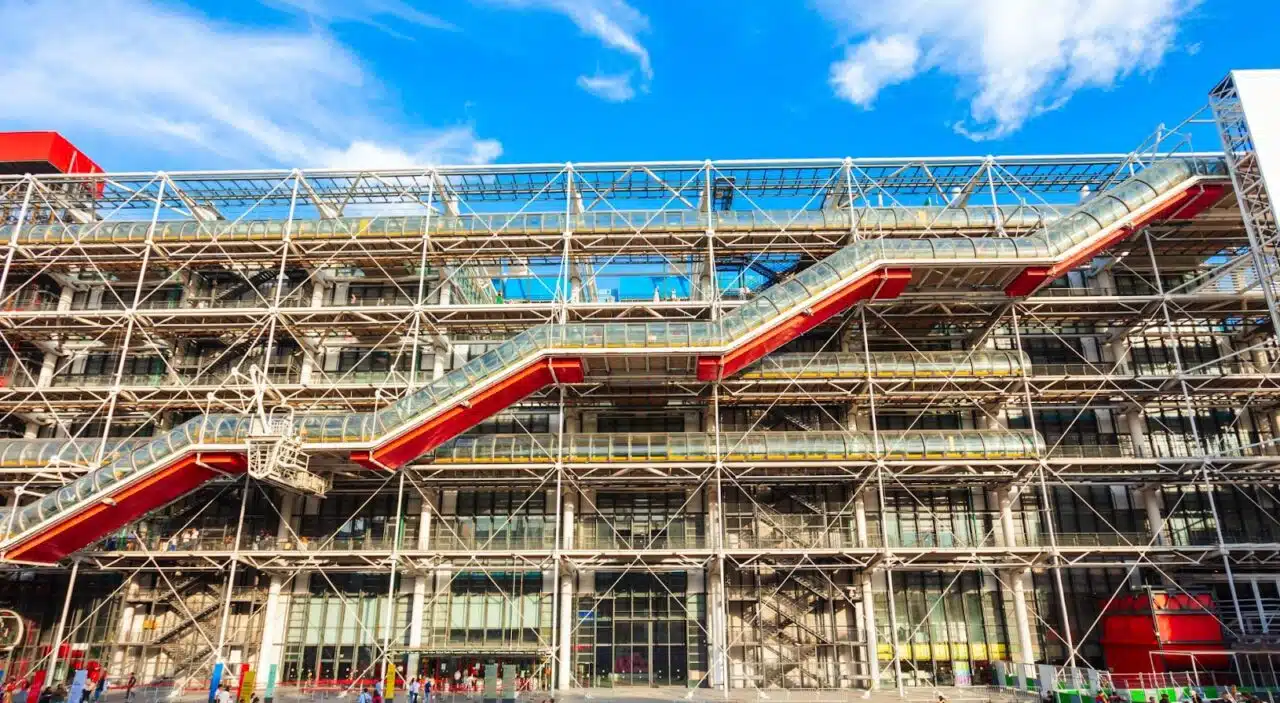
Paris boasts eye-catching buildings galore, and chief among them is the Musée d’Orsay. But unlike the Gothic structures of old or the Haussmannian architecture that defines modern-day Paris, the Centre Pompidou stands out for a singular reason—the guts are on the outside. With its structures and pipes outside and painted in vivid colors, visitors get a glimpse of what this unique museum is all about. Filled with contemporary art, like Duchamp’s Fountain and Beuys’ Plight, the museum is known for both its modern treasures and cutting-edge exhibits that often tip-toe the line of controversy. Compared to Paris’ museums that offer peaks into the past, the Centre Pompidou blazes quite forcefully into the future.
Travel the World and Explore the Best Museums with Next Vacay

Feeling cultured yet? The world’s best museums await, from the Louvre in Paris to the Met in NYC. And Next Vacay can help you knock them all off your bucket list. With deals to destinations all over the world, travelers can get their fill of art, culture, and history while perusing the most moving items from around the globe. Our team of deal hunters does all the work of searching and vetting every deal so when it shows up in your inbox, you know it’s the real deal. All you have to do is book.
So, who’s ready for their next art and culture study abroad? Fly there with Next Vacay.
